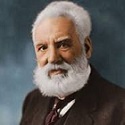 I applaud motivational speakers that energize people and cause them to have positive perspectives of life. However, I can’t help but to wonder who motivated people like Alexander Graham Bell (invented the telephone) and Christopher Latham Sholes (invented the typewriter and QWERTY keyboard) when motivational speakers were nonexistent.
I applaud motivational speakers that energize people and cause them to have positive perspectives of life. However, I can’t help but to wonder who motivated people like Alexander Graham Bell (invented the telephone) and Christopher Latham Sholes (invented the typewriter and QWERTY keyboard) when motivational speakers were nonexistent.
 It must have something to do with them being unconventional in their thinking, which gave them drives that would not settle for “status quo”. In today’s vernacular, they made conscious decisions to soar alone like eagles rather than to fly in flocks like sparrows.
It must have something to do with them being unconventional in their thinking, which gave them drives that would not settle for “status quo”. In today’s vernacular, they made conscious decisions to soar alone like eagles rather than to fly in flocks like sparrows.
Bell and Sholes are just two historical inventors from decades ago that made significant contributions to this high-tech era. Namely, their inventions have evolved and merged on computers and cellular telephones. They are essentially the foundations this astounding era of mass communications that we enjoy today and will serve future generations. AMAZING!
The next five innovators are examples of persevering over adversities and achieving success. The contributions they made to humanity continues beyond their lifespans. Their stories are a few amongst many that could motivate successive generations of innovators to also become successful by conquering adversities.
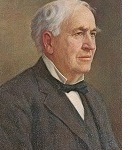 Edison began school in Port Huron, Michigan, when he was seven. His teacher, the Reverend G. B. Engle, considered Thomas to be a dull student. Thomas especially did not like math. And he asked too many questions.
Edison began school in Port Huron, Michigan, when he was seven. His teacher, the Reverend G. B. Engle, considered Thomas to be a dull student. Thomas especially did not like math. And he asked too many questions.
The story goes that the teacher, Reverend B. G. Engle, whipped students who asked questions. After three months of school, the teacher called Thomas, “addled,” which means confused or mixed up. Thomas stormed home.
The next day, Nancy Edison brought Thomas back to school to talk with Engle. He told her Thomas couldn’t learn. Nancy became angry at Engle’s strict ways. She took Thomas out of school and decided to home-school him. It appears he briefly attended two more schools. However, his school attendance was not very good. So nearly all his childhood learning took place at home.
Edison experimented with thousands of different filaments to find just the right materials to glow well and be long-lasting. In 1879, he discovered that a carbon filament in an oxygen-free bulb glowed but did not burn up for 40 hours. Edison eventually produced a bulb that could glow for over 1500 hours. The incandescent bulb revolutionized the world. More patents were issued to Edison than have been issued to any other single person in U.S. history: 1,093.

 Bette Graham hoped to be an artist, but circumstances led her into secretarial work. Bette, however, was not an accurate typist. Fortunately, she recalled that artists could correct their mistakes by painting over them with gesso, so she invented a quick drying “paint” to cover her typing mistakes. Bette first prepared the secret formula in her kitchen using a hand mixer, and her young son helped to pour the mixture into little bottles. In 1980, the Liquid Paper Corporation, which Bette Graham built, was sold for over $47 million.
Bette Graham hoped to be an artist, but circumstances led her into secretarial work. Bette, however, was not an accurate typist. Fortunately, she recalled that artists could correct their mistakes by painting over them with gesso, so she invented a quick drying “paint” to cover her typing mistakes. Bette first prepared the secret formula in her kitchen using a hand mixer, and her young son helped to pour the mixture into little bottles. In 1980, the Liquid Paper Corporation, which Bette Graham built, was sold for over $47 million.
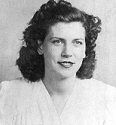
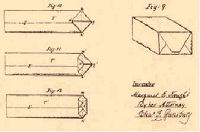 Margaret Knight, remembered as “the female Edison,” received some 26 patents for such diverse items as a window frame and sash, machinery for cutting shoe soles, and improvements to internal combustion engines. Her most significant patent was for machinery that would automatically fold and glue paper bags to create square bottoms, an invention which dramatically changed shopping habits. Workmen reportedly refused her advice when first installing the equipment because, “after all, what does a woman know about machines?”
Margaret Knight, remembered as “the female Edison,” received some 26 patents for such diverse items as a window frame and sash, machinery for cutting shoe soles, and improvements to internal combustion engines. Her most significant patent was for machinery that would automatically fold and glue paper bags to create square bottoms, an invention which dramatically changed shopping habits. Workmen reportedly refused her advice when first installing the equipment because, “after all, what does a woman know about machines?”
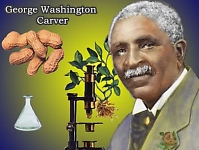 Carver developed and promoted about 100 products made from peanuts that were useful for the house and farm, including cosmetics, dyes, paints, plastics, gasoline, and nitroglycerin. Carver is also associated with sweet potato products. In his 1922 sweet potato bulletin, Carver listed a few dozen recipes, “many of which were copied verbatim from Bulletin No. 129, U. S. Department of Agriculture”. Carver’s records included the following sweet potato products: 73 dyes, 17 wood fillers, 14 candies, 5 library pastes, 5 breakfast foods, 4 starches, 4 flours, and 3 molasses. He also had listings for vinegars, dry coffee and instant coffee, candy, after-dinner mints, orange drops, and lemon drops.
Carver developed and promoted about 100 products made from peanuts that were useful for the house and farm, including cosmetics, dyes, paints, plastics, gasoline, and nitroglycerin. Carver is also associated with sweet potato products. In his 1922 sweet potato bulletin, Carver listed a few dozen recipes, “many of which were copied verbatim from Bulletin No. 129, U. S. Department of Agriculture”. Carver’s records included the following sweet potato products: 73 dyes, 17 wood fillers, 14 candies, 5 library pastes, 5 breakfast foods, 4 starches, 4 flours, and 3 molasses. He also had listings for vinegars, dry coffee and instant coffee, candy, after-dinner mints, orange drops, and lemon drops.
Carver’s famous saying: “When you do the common things in life in an uncommon way, you will command the attention of the world.”
 Please see the article, “What Steve Jobs taught us: It’s OK to fail”. Note the following paragraph from the article:
Please see the article, “What Steve Jobs taught us: It’s OK to fail”. Note the following paragraph from the article:
“Steve Jobs will always be best known for his incredible success in guiding Apple Inc. and transforming the entire consumer computer and phone industry. But he’ll also be remembered fondly as the poster child for how making mistakes — and even failing — can sometimes end up being the best thing that ever happens to you.”
Steve’s history is comprised of being a college dropout, fired tech executive, and unsuccessful businessman. These scenarios are virtually paradoxical to his success with Apple. The reason is that he didn’t let disappointments and failures stop him.
Conclusion
Thomas’ teacher said that he was “addled”: couldn’t learn. Bette was not an accurate typists. Men ignored Knight. Carver persevered regardless to racism. Jobs was fired, had business failures, and persevered in spite of a painful terminal disease. These are five amongst many that typified a quote from William Penn, “Patience and diligence, like faith, remove mountains”.
These innovators did not let issues thwart their endeavor to succeed. All of them made contributions, which all of us utilize in everyday life. Adversities DIDN’T stop them, we CANNOT let adversities stop us from utilizing our God-given creative abilities.


